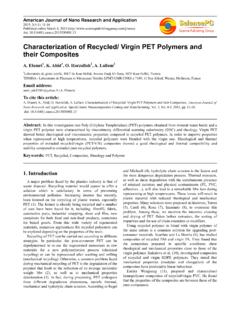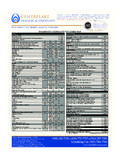Transcription of 18F NaF bone PET vs. 99mTc MDP bone scan for …
1 18F NaF bone PET vs. 99mTc MDP bone scan for staging a patient with prostate cancer Clinical HistoryA male patient with newly diagnosed prostate carcinoma was referred for a 99mTc MDP bone scan for evaluation. Imaging Findings99mTc MDP whole -BODY bone scan : January 2006 INDICATION: STAGING PROSTATE CANCER TECHNIQUE: Following intravenous administration of mCi of 99mTc MDP, three-hour delayed whole -body images were obtained in anterior and posterior projections. Oblique images were obtained of the pelvis. Fig. 1 Fig. 2a Fig. 2b IMAGING FINDINGS: There was moderate uptake in the right AC joint consistent with degenerative change. A small focus of abnormal accumulation was seen in the superior and medial left iliac bone on the posterior images.
2 On a CT of the pelvis obtained the same day, there was a small cortical spur in the same region. This may represent traction spurring related to muscle attachment. On the CT, there did not appear to be medullary abnormality. Mild uptake was seen in the right first metatarso-phalangeal joint consistent with degenerative change. No other abnormal uptake was seen. Radiotracer activity was observed in both kidneys and the bladder. IMPRESSION: 1. No definite evidence of metastasis. 2. Small area of focal abnormal accumulation in the left iliac bone medially and posteriorly. There is some cortical spurring seen in this region on the CT examination. This may represent a traction spur related to muscle attachment. However, the possibility of a metastatic focus cannot be entirely excluded.
3 3. Degenerative changes in the right AC joint and right great toe. Treatment The patient underwent a prostatectomy followed by Lupron therapy 18F NaF whole -BODY TOMOGRAPHIC bone IMAGING: December 2008 INDICATION: RESTAGING PROSTATE CANCER COMPARISON: 99mTc MDP bone scan JANUARY 2006 CLINICAL HISTORY: A male patient with history of prostate carcinoma, status post prostatectomy, and treatment with Lupron was referred for a follow-up and restaging examination. TECHNIQUE*: The patient was injected with mCi of sodium fluoride F 18 injection (18F NaF) intravenously and whole -body PET acquisition was performed, followed by low-dose non-contrast coregistration CT. The non-contrast CT was used for anatomic localization and photon attenuation correction of the PET scan .
4 Fig. 3 IMAGING FINDINGS: There was a single prominent area of elevated uptake present in the left iliac crest, which had increased in size and activity since the prior bone scan in January 2006. On the CT scan , there was associated subtle bone sclerosis within the medullary cavity of the ilium approximately cm in width. No other suspicious uptake was found. There were multiple additional areas of elevated activity present explained by arthritic and injury-related bony reaction. Prominent arthritic uptake in the lower cervical spine was present as well as areas of abnormality in the acromioclavicular and sternoclavicular joints, thoracic spine, right hip and knees. There was uptake in a healing fracture of the anterior end of the left seventh rib.
5 Fig. 4 Review of the coregistration CT images demonstrated moderate centrilobular emphysema. A cyst in the upper pole of the left kidney appeared to have resolved. Physiologic activity was present in the urinary collecting systems. In addition, review of the coregistration CT images demonstrated a soft tissue density pulmonary nodule in the lateral aspect of the right lower lobe approximately cm in diameter, not visible on review of the chest radiograph from February 2006. Also noted was evidence of the previous prostatectomy as well as sigmoid diverticulosis. IMPRESSION: 1. A single focus of skeletal metastasis was identified in the left ilium, as detailed above. 2. There was a cm pulmonary nodule in the right lower lobe, not visible on old chest radiograph.
6 While suspicious for metastasis, benign etiologies are also possible. Comparison with any prior CT scans of the chest could be useful. If not available, consider an FDG PET scan for further assessment. 3. Multiple other areas of benign elevated uptake were present due to arthritic disease and a healing rib fracture. Diagnosis Metastatic prostate cancer. DiscussionEarly detection or exclusion of bone metastases is of a high clinical importance in management of patients with high-risk prostate cancer. Newly diagnosed patients with localized disease and no metastases may benefit from radical localized curative treatment, in contrast with patients who bear metastases, in whom early initiation of androgen withdrawal and bisphosphonate therapy and withholding of unnecessary radical therapy such as radiotherapy is the appropriate treatment approach.
7 Later in the course of the disease, the detection of bone metastases in patients with advanced hormone-refractory disease may indicate the need to modify therapy or treat with chemotherapy. The primary goal of scintigraphic assessment in patients with high-risk prostate cancer is to detect, as early as possible, the presence of bone metastases. Exclusion of bone metastases by negative scintigraphy is another goal, particularly when nonspecific equivocal bony lesions have been detected on CT. Despite adverse clinical parameters, exclusion of metastases allows offering radiotherapy or radical prostatectomy with a curative intent to high-risk patients who otherwise would be managed in a palliative ,2 18F NaF PET has been found to be more sensitive than 99mTc MDP bone scan , particularly when compared with planar images, but also when compared with SPECT.
8 18F NaF, a bone -seeking positron-emitting agent, is characterized by a 2-fold higher bone uptake than 99mTc MDP, a faster blood clearance, and a better target-to-background In this case, the superior sensitivity of 18F NaF PET was illustrated by the detection of metastases in the routine follow-up 18F NaF bone scan , which were of questionable significance by 99mTc MDP bone scan . Unfortunately for the patient, the 18F NaF bone scan showed positive uptake in the left ilium. In hindsight, when comparing the 18F NaF images to the 99mTc MDP bone scan , it appears there was a lesion present in January 2006. At that time, it was interpreted as possible traction spur, although a small metastatic focus could not be excluded.
9 The most recent 18F NaF bone scan now has intense uptake in that region without other new findings. The patient was started back on Lupron and a follow-up scan was recommended after 3 months. Data courtesy of Ronald Smith, MD, Providence Western Washington Oncology, Lacey, Washington References: 1. Thurairaja R, McFarlane J, Traill Z, et al. State-of-the-art approaches to detecting early bone metastasis in prostate cancer. BJU Int. 2004;94:268 271 2. Even-Sapir E, Metser U, et al. The Detection of bone Metastases in Patients with High-Risk Prostate Cancer: 99mTc -MDP Planar bone Scintigraphy, Single- and Multi-Field-of-View SPECT, 18F-Fluoride PET, and 18F-Fluoride PET/CT. Journal of Nuclear Medicine 2006; 47(2):287-297 Lupron and Lupron Depot are registered trademarks of TAP Pharmaceutical Products, Inc.
10 * Any of the protocols presented herein are for informational purposes and are not meant to substitute for clinician judgment in how best to use any medical devices. It is the clinician that makes all diagnostic determinations based upon education, learning and experience.




